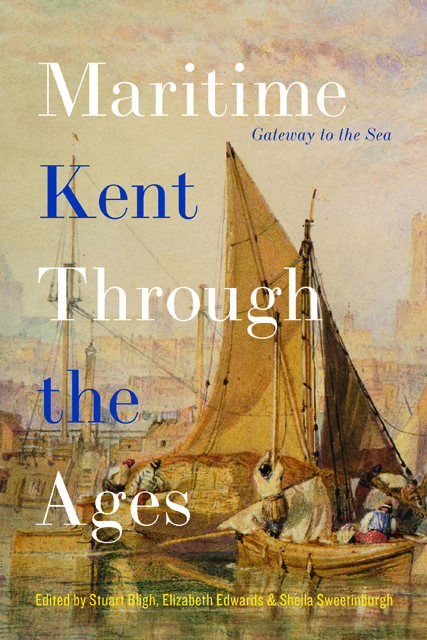18 - Saints and Weirs: Late Medieval and Early Modern Communities within a Small Island Landscape in North Kent
Published online by Cambridge University Press: 20 December 2023
Summary
In the town of Queenborough of Minster parish, Sheppey, John Carden left a detailed last will and testament on 20 September 1522. Within it, Carden bequeathed to his wife, Johanne, ‘four nobillis by year … out of land called “South Cliffe”’ including ‘forty mother sheep and two keyne’. He also left her his ‘new boat’ as long as she remained unmarried and until his sons William and Alex were old enough to make their own living. Carden also bequeathed five ewes to ‘the king fery’, highlighting the importance of maintaining Sheppey’s main transport system between the island and the mainland. In addition, Carden’s religious bequests, like those of other owners of boats and weirs, on the Isle of Sheppey in particular, are consistent with supporting brotherhoods and church lights dedicated to St Peter, St James and St Clement, religious patrons of fishermen, mariners and sea travellers.
The islands of Sheppey, Elmley and Harty, comprising over 22,000 acres of land, during the late medieval and early modern period were well known for their fertile pastureland, corn production and orchards; however, 90 per cent of islanders who bequeathed weirs in their last wills and testaments, dated between c.1400 and 1559, were involved in farming. Although 16,000 acres of the islands collectively were considered to be rich and fertile marsh and pastureland, the islands also had a diverse range of fishing practices. Fishermen at the western end of Sheppey, at Queenborough, were more likely to be dredge fishermen, whilst those living north-east of Sheppey, at Leysdown, were more likely to be involved with weir fishing practices. Queenborough testators were also more likely to have London associations, whilst testators of Harty had Faversham connections. However, there were some interesting yet important exceptions within the testamentary evidence, such as the case of William German of the parish of Leysdown, Sheppey, who produced his last will and testament on 25 October 1507. William German was recorded as residing in Leysdown, yet he requested burial in ‘the churchyard of St Bryde in Fletestrete if I dye within London’. Like similar testate parishioners of Sheppey with connections elsewhere, and boats to bequeath, German’s religious bequests were solely dedicated to Sheppey churches and lights, including St Clement’s light in Leysdown church.
- Type
- Chapter
- Information
- Maritime Kent through the AgesGateway to the Sea, pp. 401 - 416Publisher: Boydell & BrewerPrint publication year: 2021



